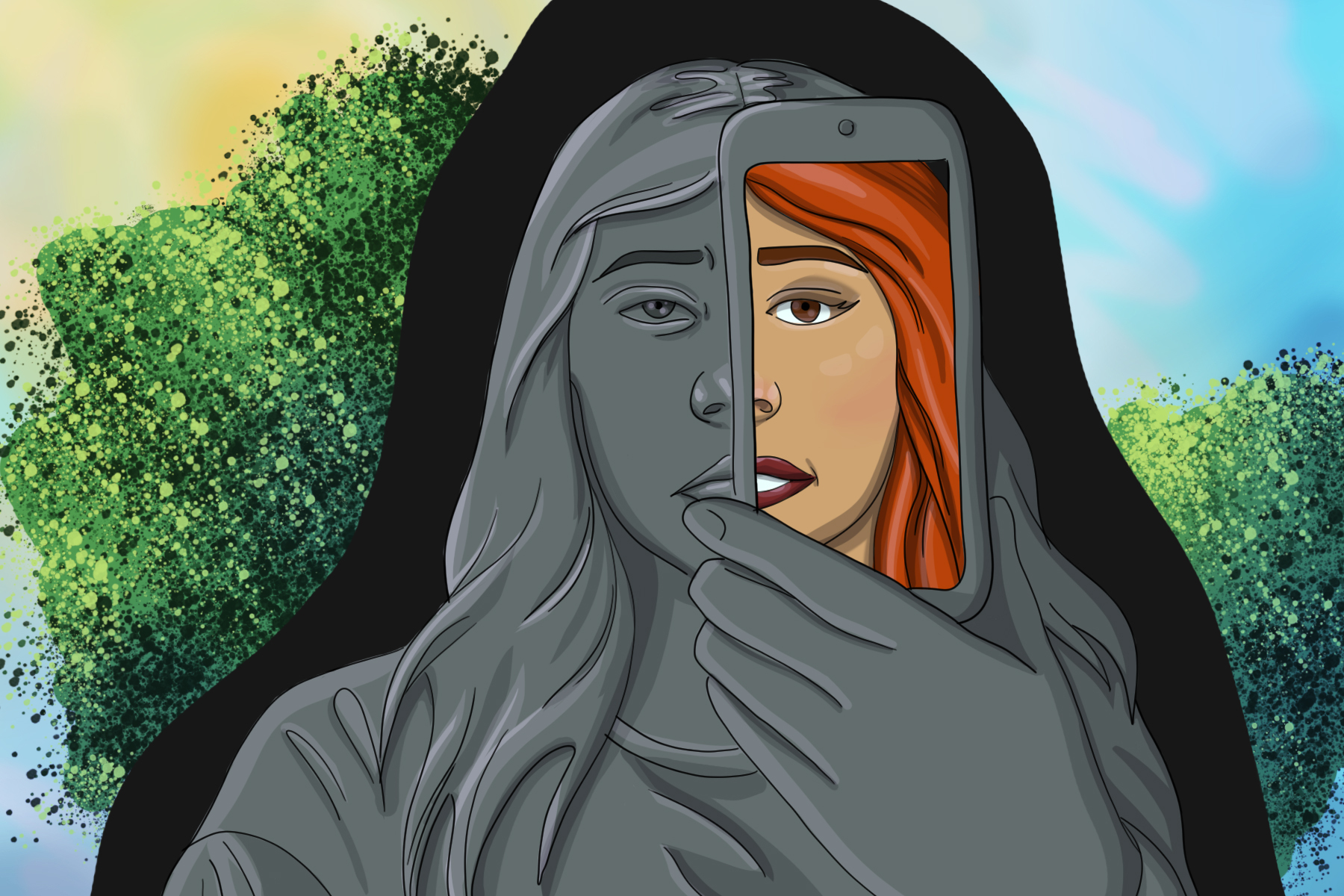On the first day of my tech detox, I recorded a total of 14 hours and 38 minutes across my devices, which is about double the amount of time that I spend sleeping. The results were shocking to me — I knew vaguely that I spent almost the entire day connected, but I never realized just how extensive it was until I took the time to actually record it. I also realized that during my free time, I open and go through all my apps in a cycle (Facebook, Instagram, Webtoons, a game) for hours at a time, multiple times a day.
If your day sounds anything like mine, then it might be time for you to take a “tech detox” as well.
From “Zoom fatigue” to anxious “doomscrolling” to what feels like uncontrollable TikTok watching, there is a constant barrage of meetings, news and online content being thrown at us. We are addicted to our cellphones and devices, but not without reason. A digital connection is now our primary means of communication to our family and friends, to our bosses and teachers, and to the rest of the world. We’re connected, all the time. And this is bad news for our mental and physical health.
In 2018, the World Health Organization classified gaming addiction as an official mental health disorder. The National Institute of Mental Health reported a link between increased social media use and depression. A study on college students showed that, as mobile phone use increased, their anxiety increased and their grade point average (GPA) decreased. As our tech habits deny our brains important downtime, our ability for deep thinking and prolonged focus is reducing.
Taking a voluntary break from our devices and/or redefining our relationship with technology is critical in regaining control over our wellness.
An industry has emerged around an increasing want of this tech detox. Some resorts are locking away their guests’ phones to ensure a more blissful vacation. There’s a whole new subgenre of self-help books designed to coach people on how to dial down their reliance on digital technology. Professional help services now offer tech-addiction therapy and digital wellness lessons. Even the leaders of the tech world like Tim Cook, Jack Dorsey and Mark Zuckerberg have publicly acknowledged the powers of their tools to damage users’ mental well-being, and now have built features into their technologies like screen time controls and reminders.
However, not all screen time is bad — after all, many students attend school via videoconferencing apps like Zoom or Google Meets, and medical and business professionals depend on their mobile devices almost 24/7 for critical or career-making work. It’s unrealistic — and counterproductive — to simply cut out all technology from our lives.
So, the first step in a tech detox would be to assess which parts of screen time feel toxic and make you unhappy. This could be scrolling through Instagram and Twitter or reading the news. After identifying those aspects, the next step is creating a realistic plan to minimize the consumption of what’s dragging you down. You could set modest goals, such as a time limit of 30 minutes a day for those activities.
There are also apps and sites out there designed to help you consider and control your screen time. For instance, AppDetox, where you can set different rules to control your app usage; Flipd, which makes detox “social” by letting you challenge family and friends; and Forest, which is a cute way to grow (or kill) trees to help you beat your phone addiction.
https://www.instagram.com/p/CD1d8d1H07M/
But those apps, ironically, require us to spend more time on our phones — filling out or adjusting our preferences, “checking in” to the app, reading notifications — that could easily lead to getting sidetracked into checking other apps. These methods aren’t ideal for those who are easily distracted or those who can’t afford to completely lock themselves out of their phones. It can actually be counterproductive, creating an association of anxiety and other negative feelings with any form of decreasing screen time.
One great way to take a tech detox without spending more screen time is through Orpheus Pledge. Orpheus Pledge was co-founded by Niels Rosenquist, a physician-economist at Massachusetts General Hospital and Harvard Medical School, and Michelle Fang, a junior at Yale University studying ethics, politics & economics.
Orpheus Pledge was specifically founded to address this tech addiction problem, and fill the gap left unaddressed by other tech addiction products. Rather than an app actively controlling your usage, Orpheus Pledge leaves it up to you to decide how you want to “detox.”
“We want people just to leave with more awareness — this isn’t a long-term program, but more so a pause in our habits to reflect,” expresses its co-founder, Fang, through a Zoom interview.
Orpheus Pledge has two modes of disconnection that you can engage in: restriction through setting an upper-bound limit for usage, and reduction, which gradually decreases your screen time. Part of the pledge is filling out a physical log of your screen time habits and completing a daily reading related to tech addiction, behavioral change and social media’s effects on politics. And unlike apps that will collect your data, or that you have to grant an abundance of permissions to, Orpheus is completely old-school and paper-based, with no sign-in in sight.
“With the design of Orpheus, we made it a PDF [workbook] as opposed to an app, because we didn’t want people to spend more time on their phone, for the sake of getting off their phone,” Fang explains.
Orpheus is probably the best way to take a tech detox — it puts the power of control in your hands. It won’t be the notifications that remind you to take a break or the lock-out screen timers, but rather your own realization of how technology has harmed you, that give you the will to commit to a pledge to detox from your devices. And as Fang advocates, “It’s not a one-size-fits-all solution. With old-fashioned pen and paper, you can create a strategy to untether that is comfortable for you.”
Printing out the PDF, I tried my own hand at taking a meaningful tech detox. I was guided through a series of questions asking what I was tethered to and prompted to jot down the ways I would streamline my digital time. There were multiple strategies to take, such as a gradual decrease, establishing an upper-bound (e.g., up to one hour) device restriction, screen time app limits, or completely deleting two or three of my most distracting apps.
With the newfound realization of my habits, I was able to consciously stop the hours-long rabbit hole ventures, and spend my free time taking a walk and listening to an audiobook instead. Even though I was still “tethered,” I could now clearly remember this time I spent, rather than feeling like I had done nothing as the day went by. By the end of the first week, I had decreased my active screen time to eight hours, and finished two books that I had on my to-read list for months.
“We want people to become more intentional with their relationship with technology, to understand the time we spend for things,” says Fang. “So, for example, having a social call with your friends for an hour, or being in class for an hour, and understanding that to better manage it rather than lose track of time scrolling mindlessly.”
The name “Orpheus Pledge” comes from the story of Orpheus’ journey into the Underworld, where Orpheus pleaded with Hades to bring his wife, Eurydice, back into the living. Hades agreed on one condition: Eurydice would follow him on his way out, but Orpheus could not look back at her. If he did, he would lose her forever. Just as Orpheus took his last step out of the Underworld, out of anxiety that Eurydice wasn’t there, Orpheus looked back — and saw Eurydice disappear back into the Underworld.
It’s a great metaphor for how tethered people are to their devices, and how they can lose out on a large part of their lives — it’s a form of death of the present. With Orpheus Pledge, we can pledge to avoid that.

















